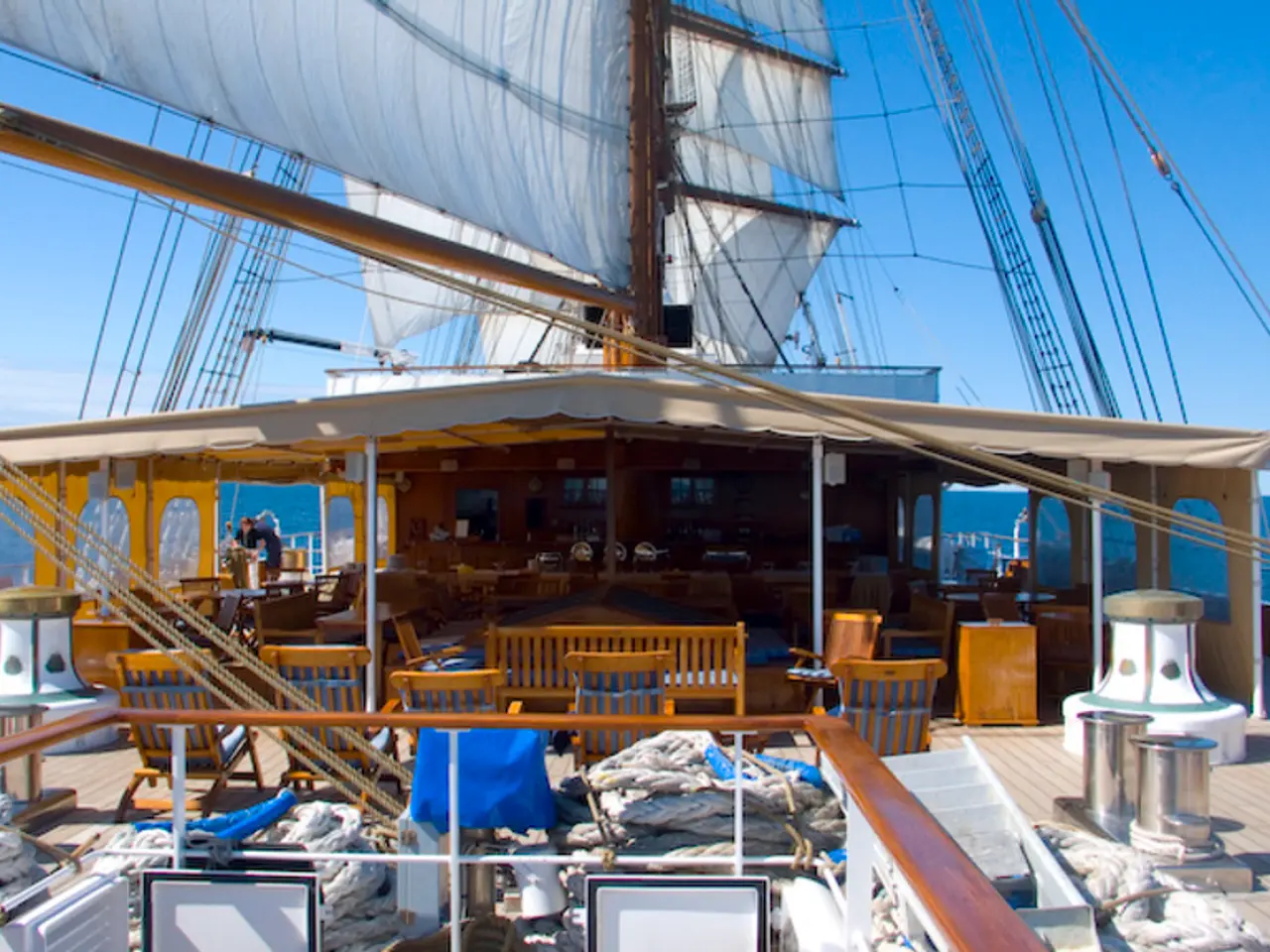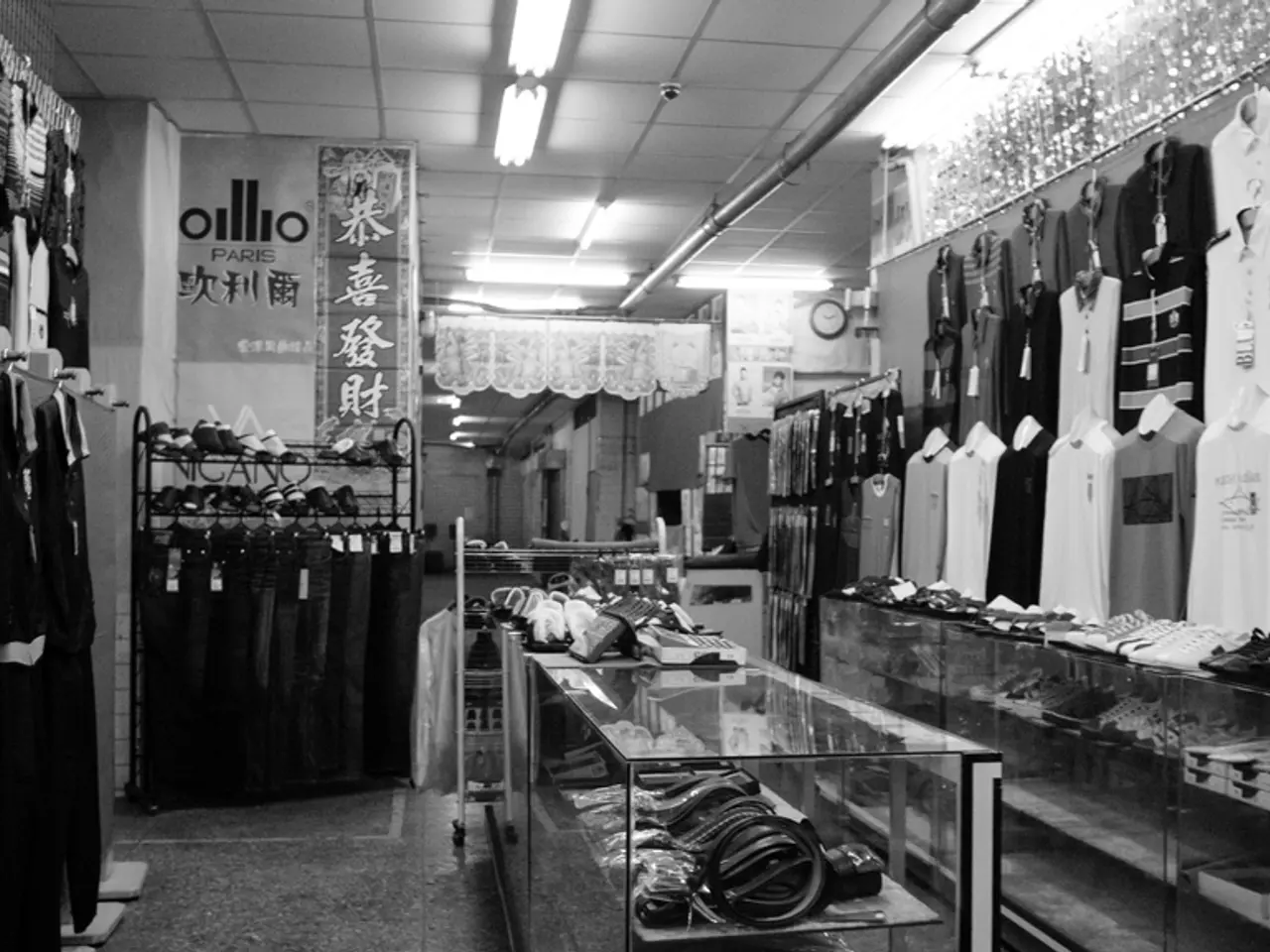Europe-bound shipping from Asia experiences a surge in costs beyond that to the U.S.
In the second half of the year, global shipping carriers are grappling with volatile demand, shifting capacity, and inconsistent success in rate hikes. Despite this, the Asia-Europe trade route has shown remarkable resilience, with strategic capacity management playing a significant role.
Jérôme de Ricqlès, a shipping expert, attributes the Asia-Europe resilience to strategic capacity management, including blank sailings and vessel redeployment to transpacific lanes. However, the transatlantic routes have seen declines, with the Shanghai-New York corridor's WCI rates sliding 11%.
Container spot rate indices on the Asia-U.S. trades have shown a third consecutive week of sharp declines. The FBX and SCFI showed steeper declines of 15% ($6,116) and 13% ($4,124), respectively, on the Shanghai-New York corridor.
In a bid to counteract these declines, CMA CGM implemented an $800 peak season surcharge per 40ft reefer container on July 1 for westbound shipments from Northern Europe to U.S. East and Gulf coasts, and to Mexico. However, on the Asia-Mediterranean route, a July 1 rate hike attempt failed, with WCI's Shanghai-Genoa leg dipping 9% to $3,751.
As of July 5th, 2025, it is more surprising to find that it is less expensive to ship a 40ft container from Asia to North Europe than to the U.S. West Coast. The rates for Asia to U.S. West Coast have decreased to around $5,001/FEU, while the rates for Asia to North Europe are generally lower, with the FBX11 index reporting around $3,442/FEU. Freight All Kinds (FAK) rates from Asia to North Europe were set at $4,100 for a 40ft container around the same period.
The factors contributing to these differences include demand and seasonality, port congestion and schedule reliability, market dynamics, and tariffs. The peak season for shipping often leads to higher demand and rates, which can vary by region. Recent reports indicate improving schedule reliability in North Europe, which might not lead to higher rates due to reduced delays. The impact of tariffs, particularly in the U.S., can influence shipping costs, with shippers potentially frontloading goods to avoid future tariff increases.
In summary, the current data suggests that shipping to North Europe is not more expensive than to the U.S. West Coast in July 2025. Instead, the rates to North Europe are generally lower. The Shanghai Containerised Freight Index (SCFI) recorded the steepest decline, with a 19% fall, landing at $2,089. Despite the volatility, the Asia-Europe trade is currently experiencing a high, leading the pack in container spot rates. In stark contrast, rates on the Asia-North Europe route surged, with WCI recording an 8% increase to $3,468 per 40ft. The Rotterdam-New York route also saw a 7% rise. The Shanghai-Los Angeles route's container spot rate dropped 15% week-on-week, settling at $3,180 per 40ft container.
- The container shipping industry, particularly on the Asia-Europe trade route, has demonstrated resilience despite global trade volatility, with strategic capacity management being a key factor.
- Despite the implementation of peak season surcharges by companies like CMA CGM, the finance aspect of the container shipping business has been affected by declining rates in several routes, such as the transatlantic and Asia-Mediterranean.
- Technology and business strategies, including demand prediction, schedule reliability, and market dynamics, play significant roles in shaping container shipping rates, with the Asia-Europe route currently leading in container spot rates, while rates to North Europe are generally lower compared to the U.S. West Coast in the current market scenario.




